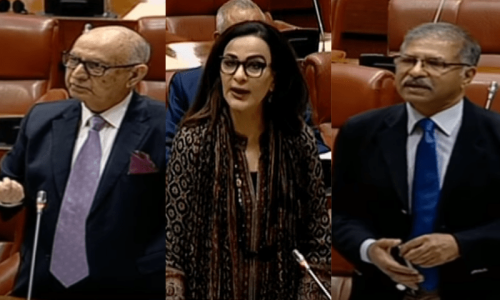
It is a biological fact that the Y chromosome, whose presence makes a male baby, is contributed by the father. The meaning is obvious: it is the father and never ever the mother who is responsible for the gender of the child. Facts like this, however, mean little or rather nothing at all in a society where men are in charge, making frequent and fitful messes, and women are allotted the thankless task of cleaning up after them.
Even these women are the lucky ones, for the simple fact of having managed to survive, to live, rendering them the ones who have a better fate. As a recent feature published in Dawn attested, a large number of female babies simply never make it in Pakistan — they are aborted, abandoned and, in a newer twist, even sold, leaving the parents with another chance for a son.
The problem of aborting or otherwise getting rid of female babies is not a new one. One of the most gruesome crimes mentioned in the Holy Quran is female infanticide, the practice of leaving baby girls to die in the desert that was common in pre-Islamic Arabia. Islam tried to stop this, with prescriptions and edicts exhorting men to respect women, and to allot them dignity and equality.
Not all the blame for Pakistan’s skewed gender ratio can be pinned on ultrasounds. Demographics and urbanisation also play a role.
Pakistan, at least, seems to be a considerable distance away from saving Muslim daughters. The normal ratio for men and women in societies is supposed to be 943-980 girls for 1,000 boys aged between one and six years. As per the 1998 census, Pakistan’s ratio is 925 girls to 1,000 boys, making it one of the most skewed in the world. According to data in the report, 1.2 million sex-selective abortions were carried out in the country in the past decade and a half.
The situation is likely to get worse before it gets better. There are several reasons for this. The first and most obvious is the availability of technology like sonograms and ultrasounds. Knowing early in the pregnancy whether the child is a boy or girl obviously increases chances that in-laws and parents awaiting the arrival of sons can consider other options.
In countries such as China and India, many do so, a fact that has prompted state intervention. In India, legislation that prohibits sex-selective abortion has been passed. But enforcement has been a problem; for where there is a will there is usually a way. Instead of going to the same clinic where they got the ultrasound, Indians are simply going to separate clinics where they can have an abortion. The ratio in India is 112 men to 100 women, the disparity one of the largest in the world.
According to a report published in The Economist earlier this year, 45m girls are supposed to be ‘missing’ in India, killed simply because their gender was detected before birth. Where India leads, Pakistan is not far behind. If mothers’ lives are regularly and routinely jeopardised here so that there can be another chance of birthing a son, it follows that there are not always many qualms about getting rid of a daughter.
Not all the blame for Pakistan’s skewed gender ratio can be pinned on ultrasounds. Demographics and urbanisation also play a role. As some experts have noted, when people move to cities, as a large part of Pakistan’s population has over the past years, two other factors are also evident. First, expenses rise and couples are likely to have fewer children. This means that if they had five or six chances of having a child before, they may have only two or three now. With fewer chances of having children, there are even fewer chances of having a son. The result is a desire to have a boy in the limited chances that are available.
Moreover, the distance from communities and lack of accountability of how a pregnancy was terminated or what happened to a newborn child further create opportunities for abuse. Often abused and isolated themselves, mothers have few options to turn to if fathers are convinced they do not want to have another daughter to marry off.
There is some hope, however. A recent study conducted on subjects in Haryana, India, saw that increased exposure to television provided more education and actually decreased the likelihood that boys would always be favoured over girls.
An even more revolutionary change has occurred in China (even though it continues to have a skewed ratio), where rural parents now want daughters instead of sons. This is because a great number of Chinese women have migrated to nearby cities and towns to work and they regularly send back money to their parents. Not only have rural men not migrated in as large numbers, they are now unlikely to be able to find wives since girls who move to cities are uninterested in rural (and poorer) men.
The answer to ending the cruel favouring of sons over daughters, the poor treatment of the latter who are born and the elimination of those that are unborn, lies in changing the ultimate condition of women themselves. It is a tall order, as Bilquis Edhi and Faisal Edhi stated in a recent interview; even the open cradle system, via which the Edhi Foundation tried to urge the giving up of baby girls (rather than abandoning them in rubbish piles), has been criticised as somehow encouraging illicit relations outside of wedlock. It is a bizarre statement to make, but it underscores the problem. In a country of men, in a nation of sons, baby girls have few chances.
The writer is an attorney teaching constitutional law and political philosophy.
Published in Dawn, August 23rd, 2017











































